Text and Photos by KokHeong McNaughton
During the Cerro Grande fire, many homes in our community were lost, particularly in the Western Area and North Community. Some home owners stayed and rebuilt. Others sold their lots and moved away. A few of these lots have remained empty. Mother nature took over.
If you drive up Urban Street off Diamond Drive, where it turns into 48th St., you’ll see an empty lot to your left. A year ago, this lot was completely wild, with lots of weed and Chamisa bushes. Folks in this neighborhood have been walking across this empty lot, creating a path cutting through it, connecting 48th St. to the Perimeter Trail and Upper Pueblo Canyon Trail.
Today, it is a beautiful pollinator garden, bursting with vitality complete with bird songs, the shrills of hummingbirds, the buzzing of bees, butterflies flitting among flowers, and the continuous chirping of insects.
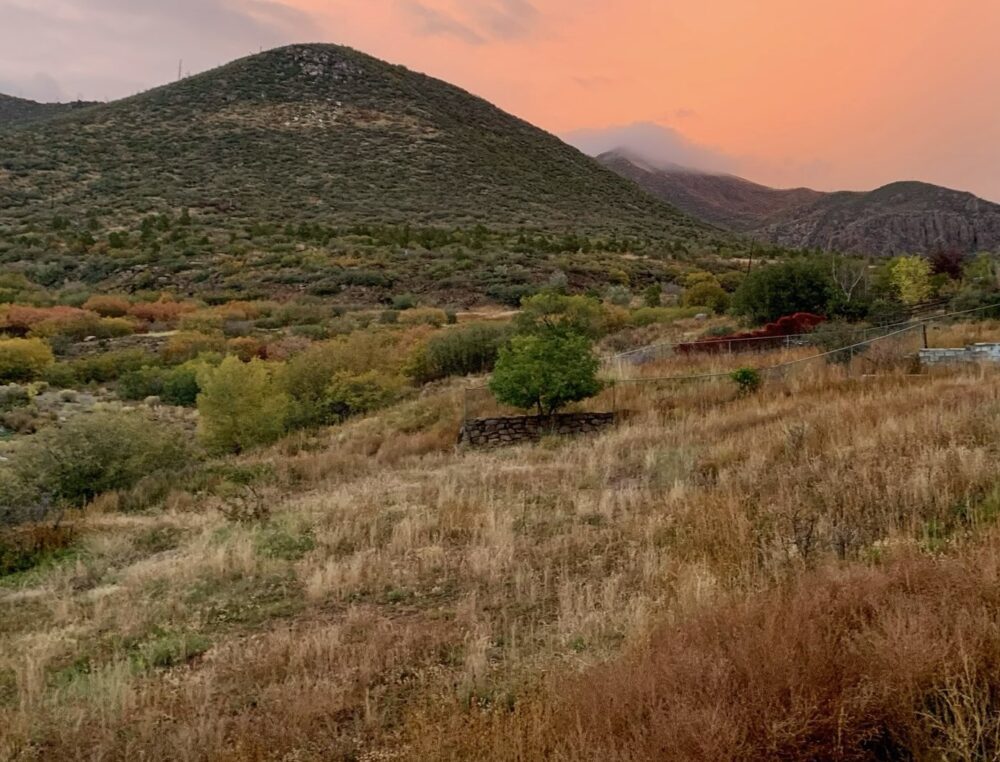
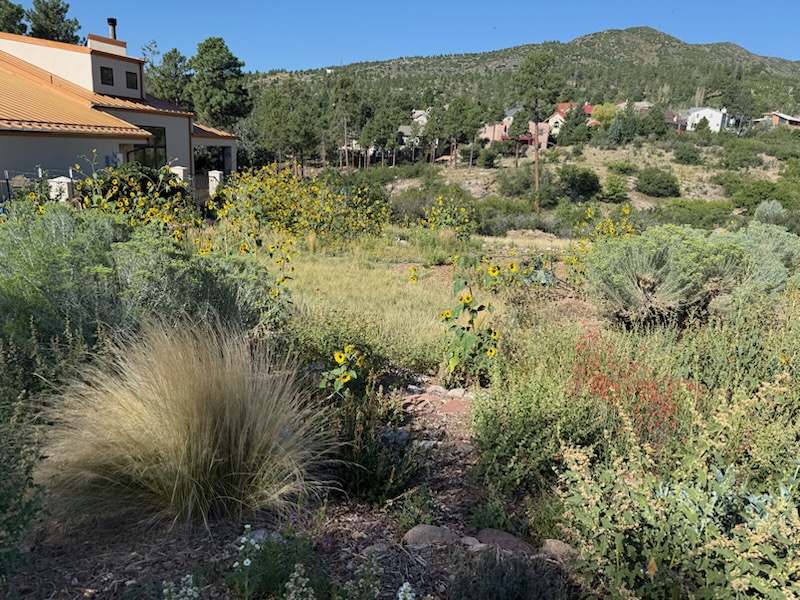
This is all done as a labor of love from Lee McAtee, an avid Master Gardener and retired LANL Division Leader. Lee is passionate about gardening. His home, to the left of this garden, was built after the Cerro Grande fire by a previous owner. Every bit of land around the house is filled with plants of all sorts. The house was built with water conservation in mind. Rain water and runoff from the property are collected and stored in an underground cistern for irrigation. When Lee ran out of space to garden around his house, he thought about buying the adjacent empty lot in order to provide a building buffer, create a pollinator garden, and maintain access to the trail system.
Lee began by clearing the space from invasive species like Siberian Elms, and pulling out noxious weeds like cheat grass, bursage, pigweed, kochia, and mullein. He also thinned and spaced out desired shrubs like chamisa, native grasses like blue grama grass and Western wheat grass, and native perennials like globe mallows and purple asters to make space for other plants. When the ground was ready, he began broadcasting native wildflower seeds. It so happened that at this time, Bee City Los Alamos was publicizing our first Backyard Pollinator project. Lee applied for and received a tray of native perennials and shrubs to add to his collection. From time to time, he would buy more plants from Petree Garden Center and Plants of the Southwest to fill in the spaces. He says he didn’t start with a master landscaping plan, but simply planted each plant with a seasoned gardener’s intuitive sense as to where it would do well among the other plants for the combination to look good.
He uses mulch from the Eco Station to keep weeds down, and gathers rocks to create boundaries and delineate paths. He makes his own liquid fertilizers to be used as needed. He does some watering by hand, but never needs to do so more frequently than once every 10 days during the driest month. When asked if he has problems with deer, he noted that there are many deer in his neighborhood and he has seen a few every now and then, but they pose no problem for him. This is probably because the plants along the outer perimeter are more deer resistant, like chamisa, and there are more than enough of the other plants to share should they clear that barrier. Having a family dog as a gardening companion to patrol the area also helps keep the deer away.
At this time, the garden has only taken up about 1/3 of the entire area. It contains several fruit trees, many shrubs, lots of sunflowers (most of them are volunteers), more than 200 plants of many species both native and waterwise, a bird house, and two water features. Lee continues to expand this pollinators’ paradise and is in the process of obtaining a Wildlife Habitat certification. He spends from 4-6 hours a day in the garden and “enjoys every minute of it”. He also enjoys talking to and interacting with everyone who walks past and stops to admire his work. His wife Cindy says that gardening is therapy for him.
Here are a few more pictures taken from various angles.
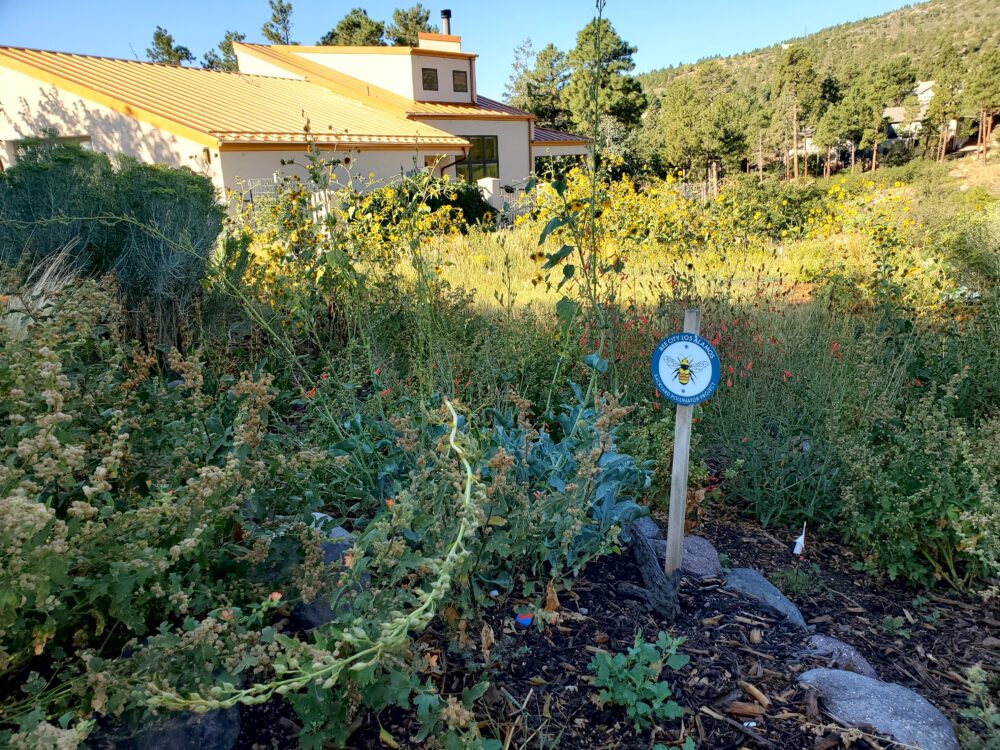
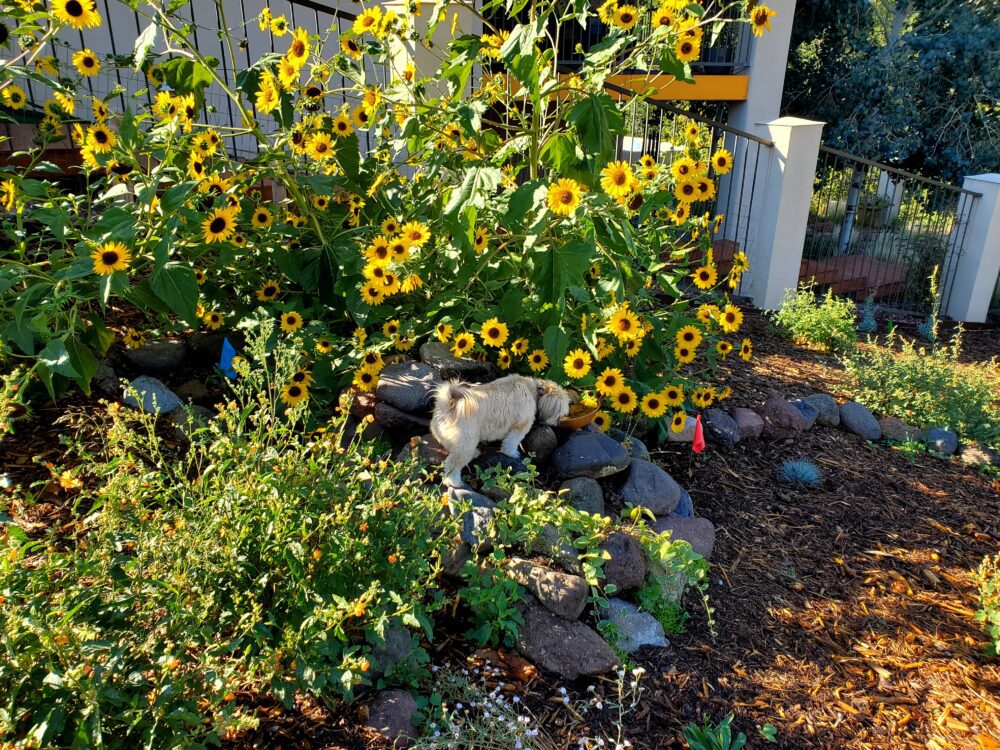
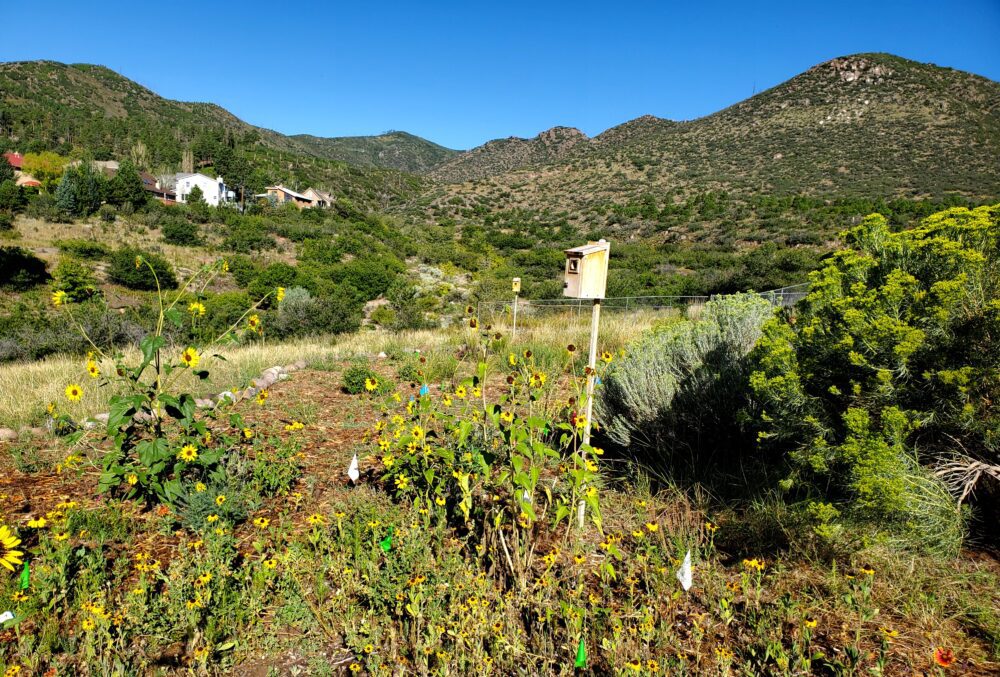

This is Selvi Viswanathan and enjoyed about your garden immensely. I see you want to certify your yard with Wildlife Habitat. Please do you have water source like a bird bath? National Wildlife Federation welcomes and PEEC has handouts at Nature Center.
LosAlamos is certified First Community Wildlife Habitat in New Mexico in 2016. Every year we have to renew’ So your beautiful yard will help if you certify as Backyard Wildlife Habitat.
Thank you.
Thank you, Selvi- a good reminder that wildlife of all sorts benefit from supportive habitats!
Our neighborhood is mostly cheat grass and ragweed sprouted with Siberian elms. I was thrilled to get a bee garden, but somehow (our neighborhood is also a deer-and-gopher sanctuary), my penstemons, zinnias, cone flowers, and even the fern bush did NOT do well despite the fact that I, too, augmented with compost from the EcoStation. Thank you for the huge landscaping job you did on that space. Everybody–anybody who beautifies–thank you.
I’m so sorry to hear your Backyard Pollinator Garden didn’t thrive, Jody, even with the hard work you put into it. It’s possible that if the plants didn’t die this year, they were putting their efforts into root growth, and they’ll be more successful next year. Thank you for all your efforts to get the garden started! And yes, everyone benefits from the efforts around town- from people to wildlife!